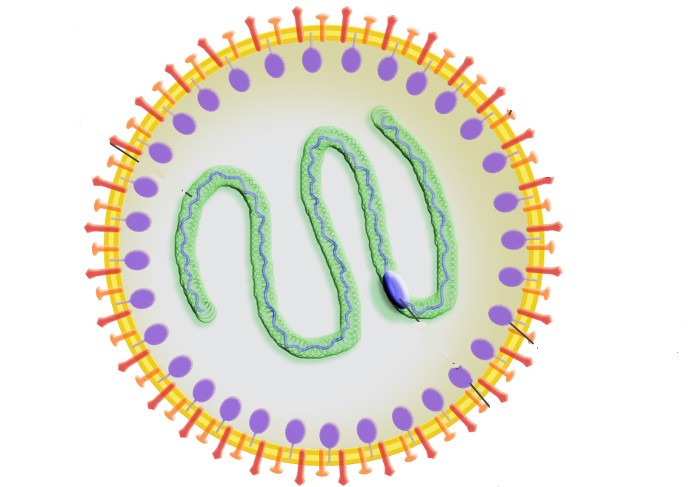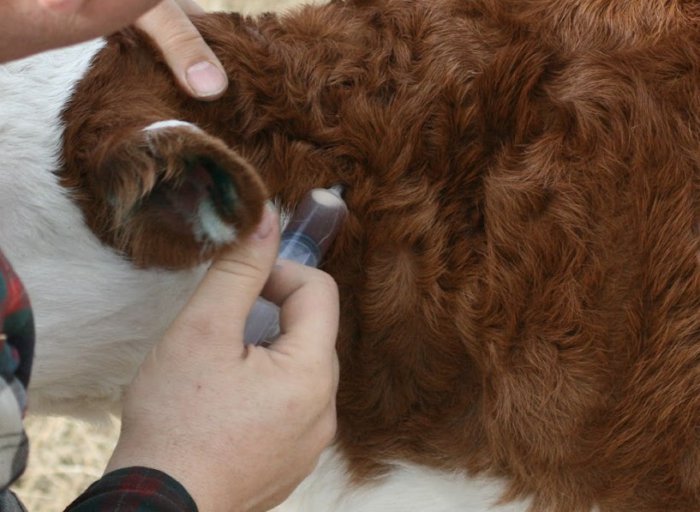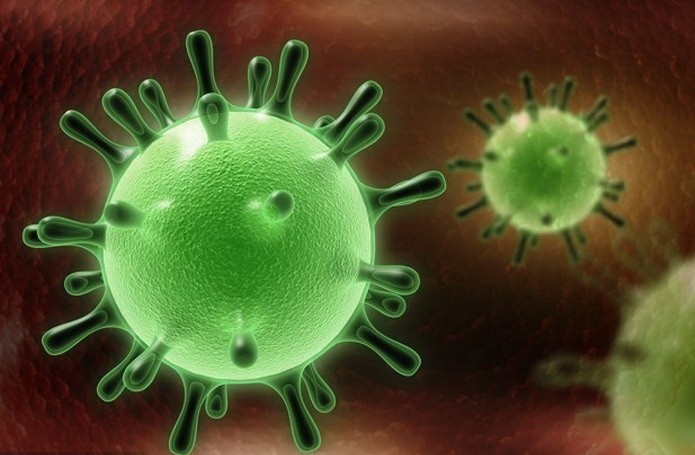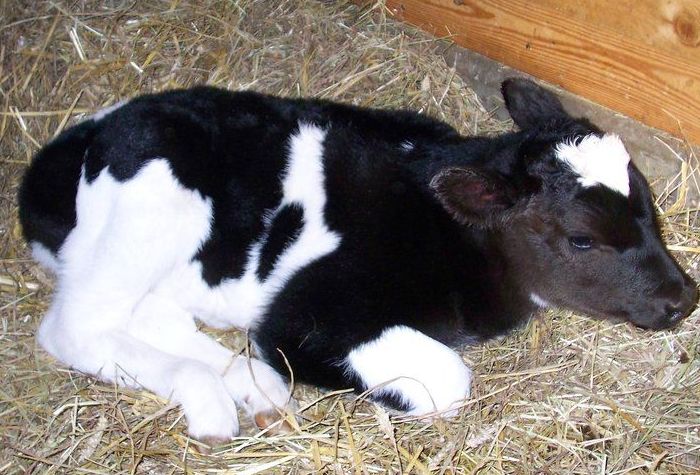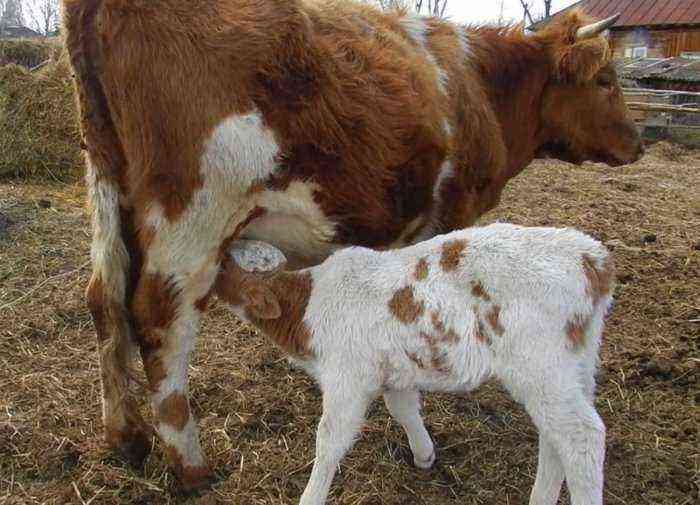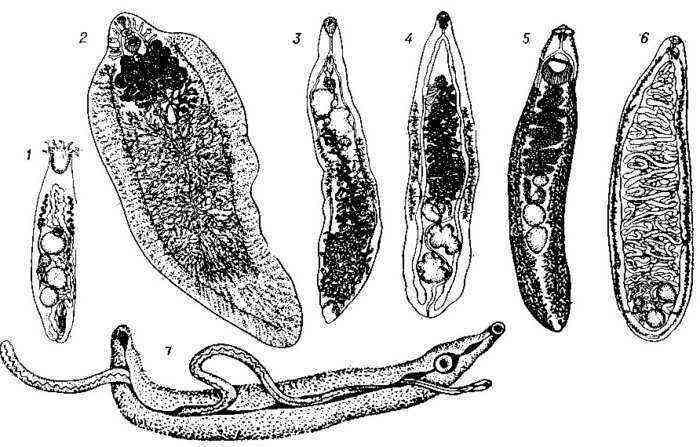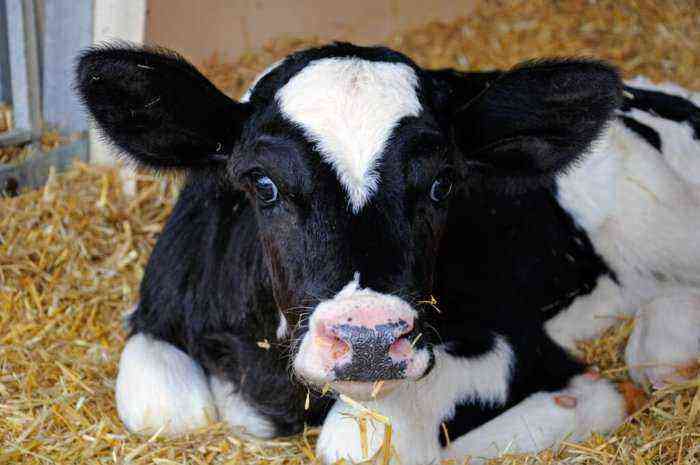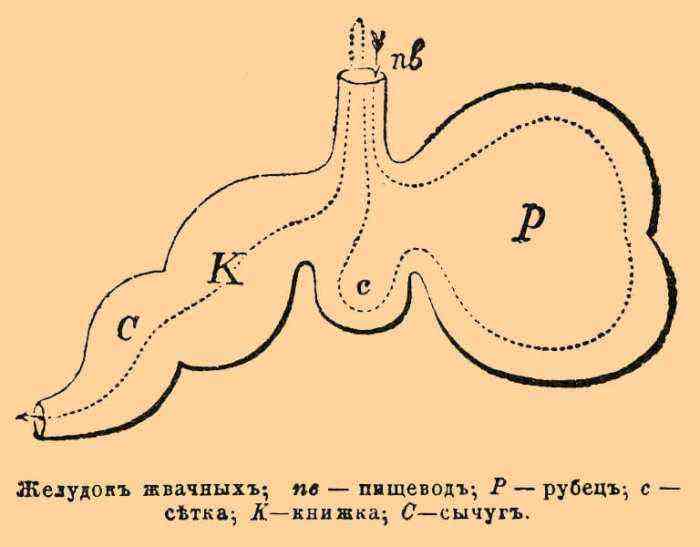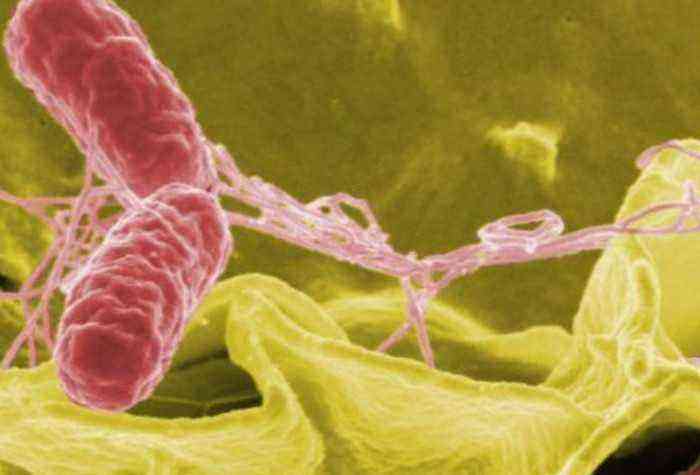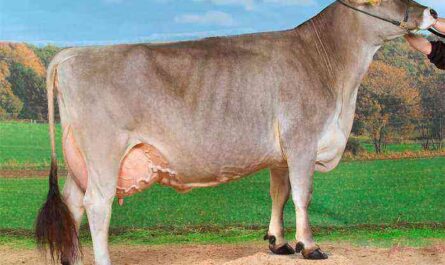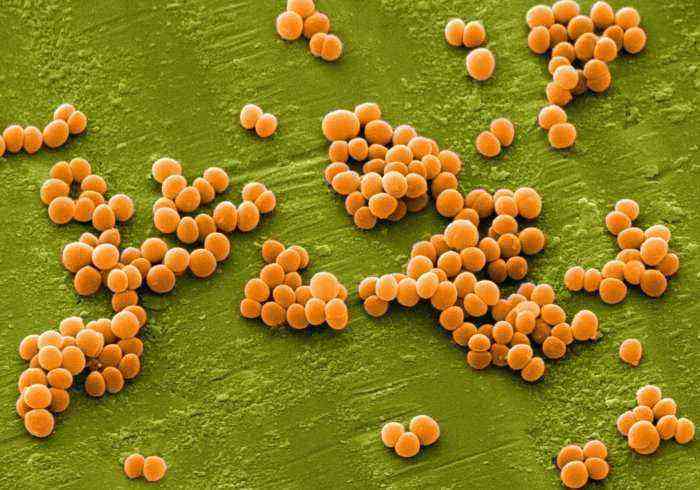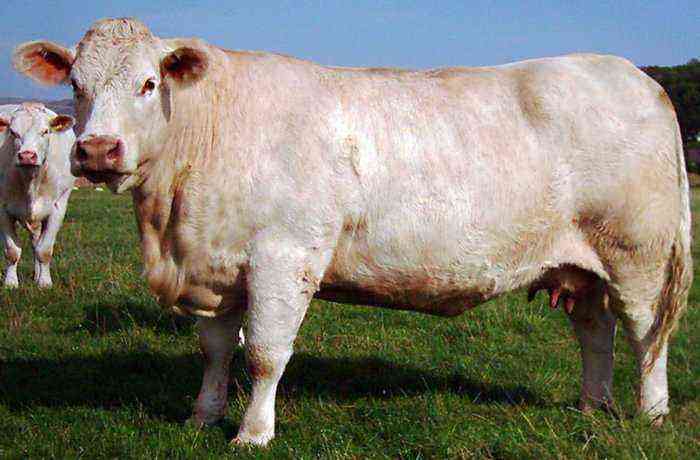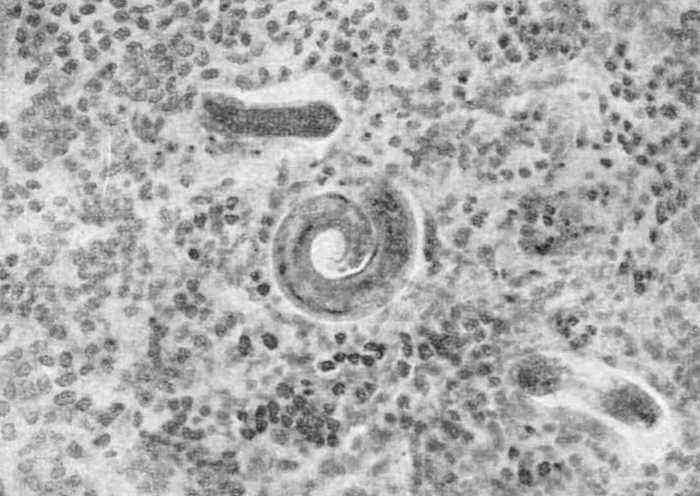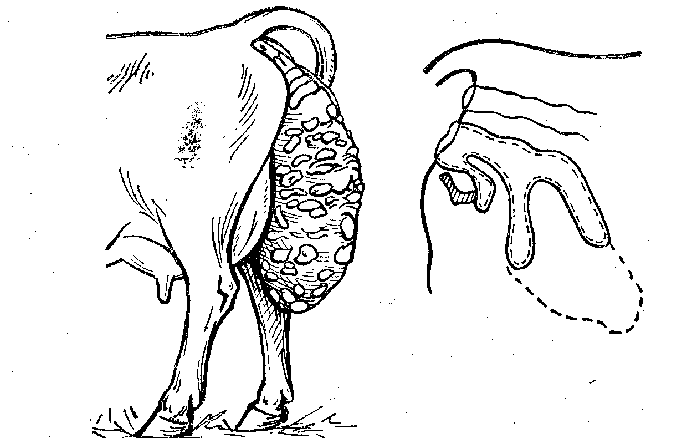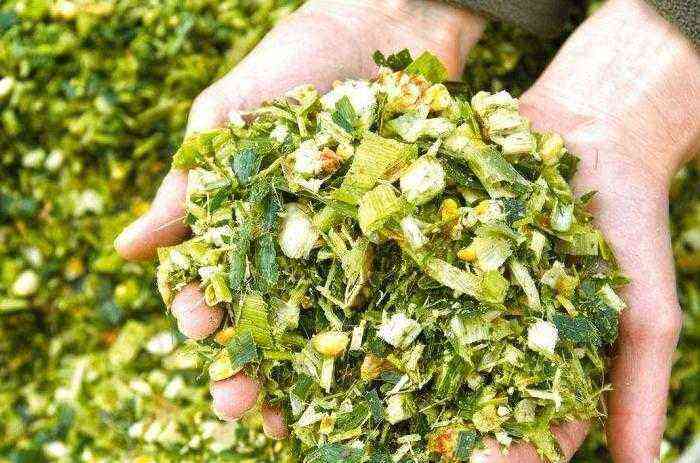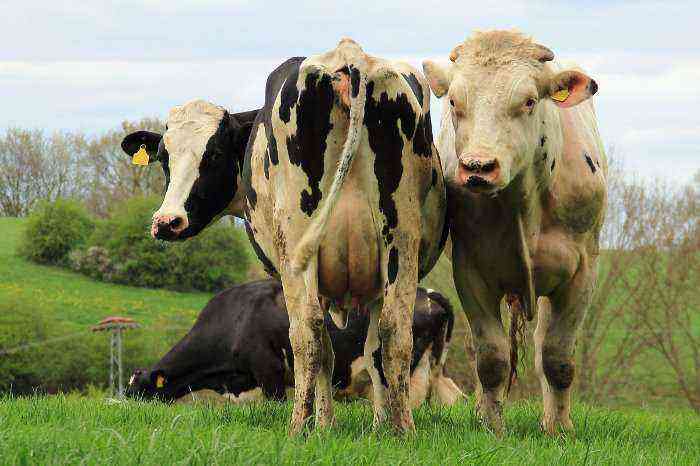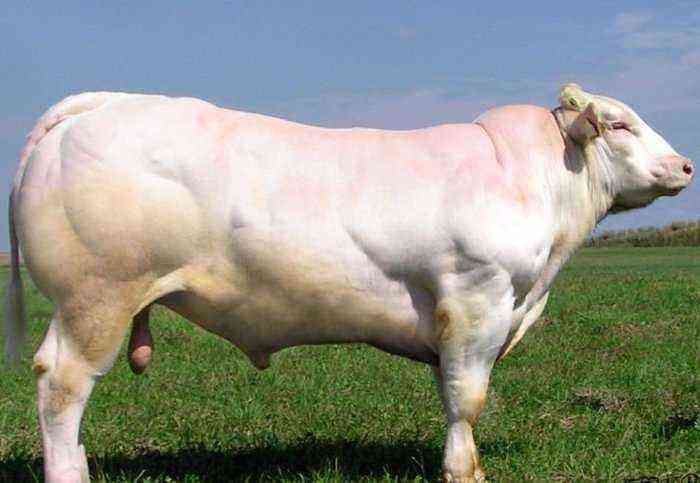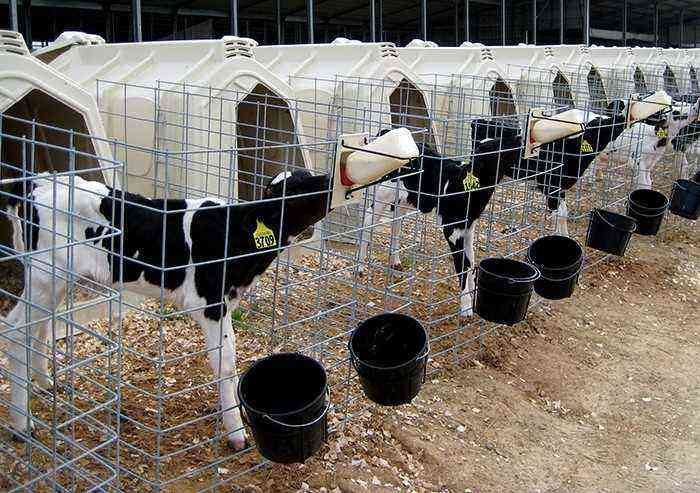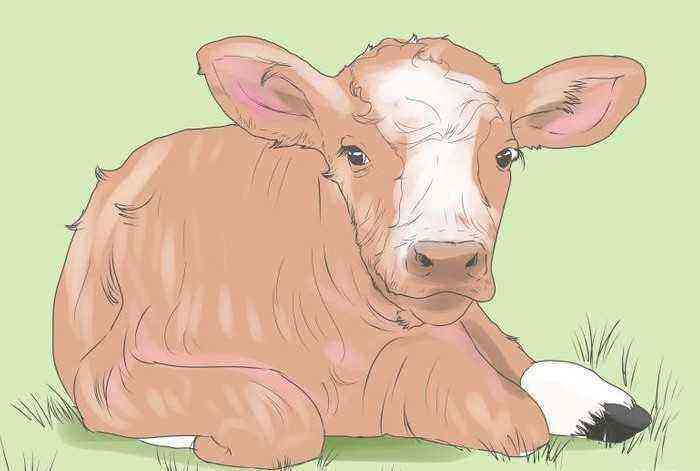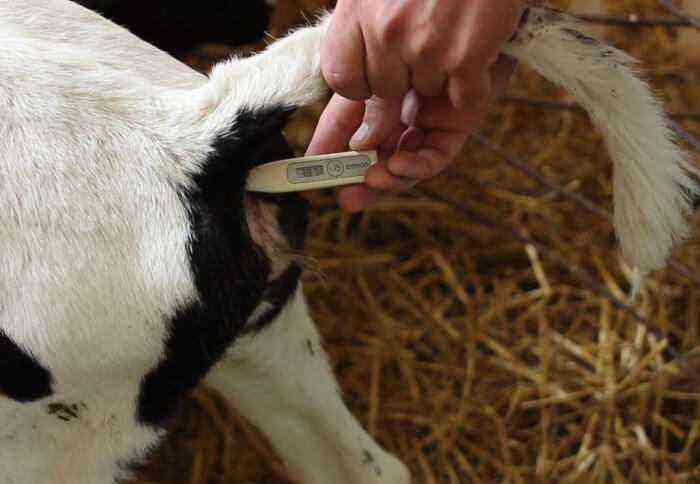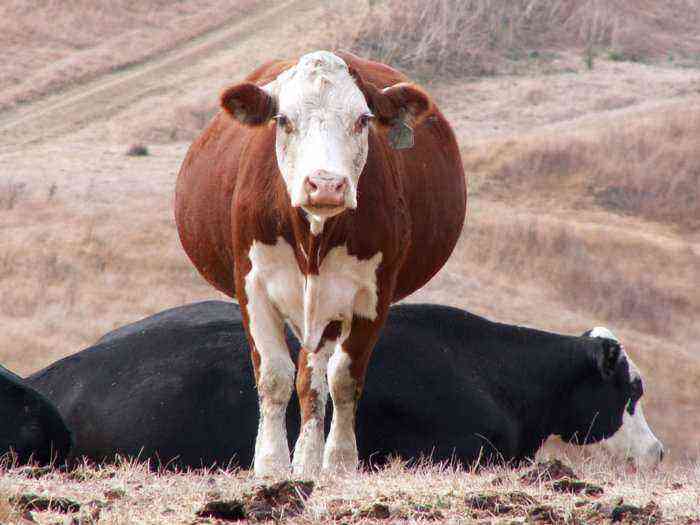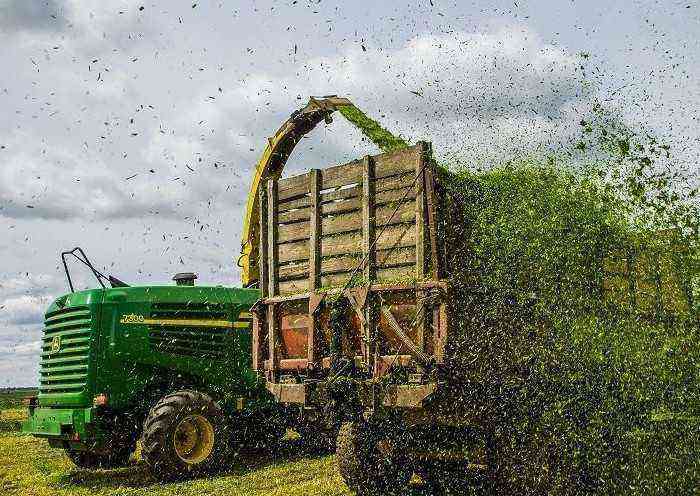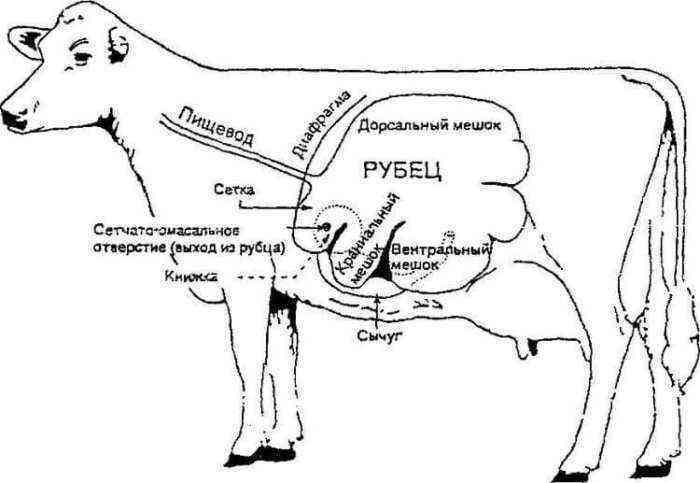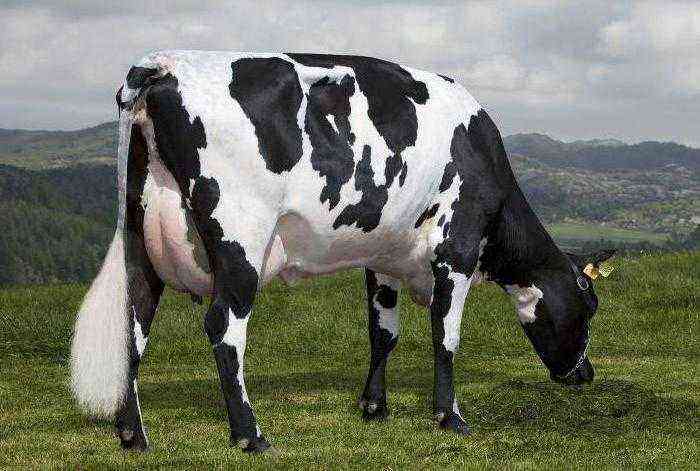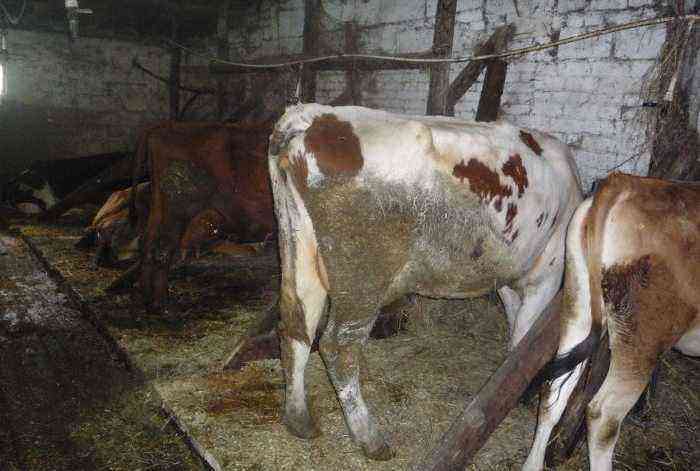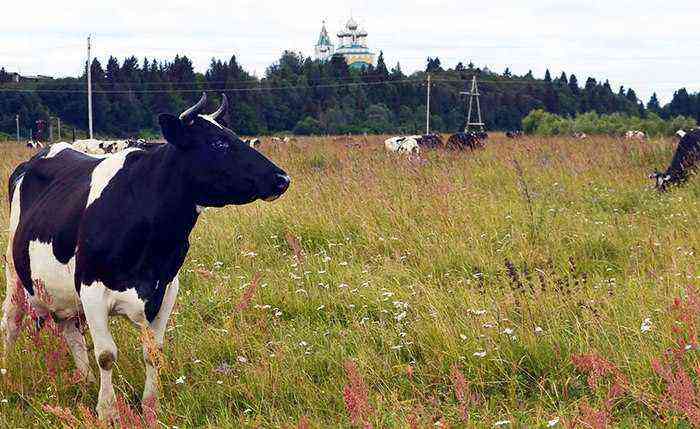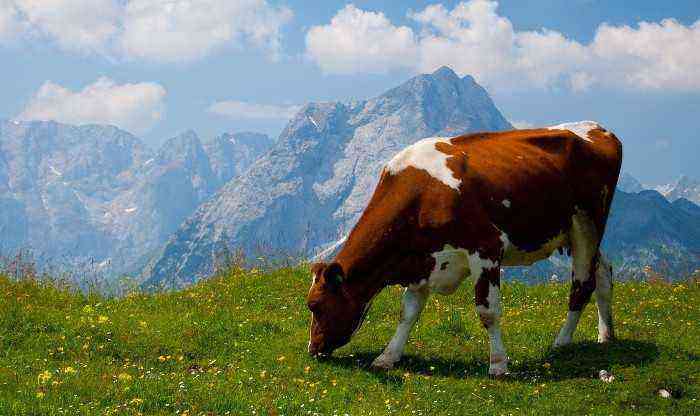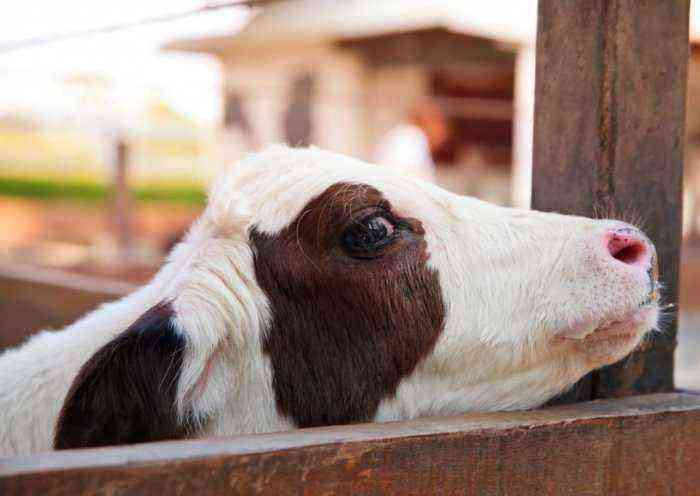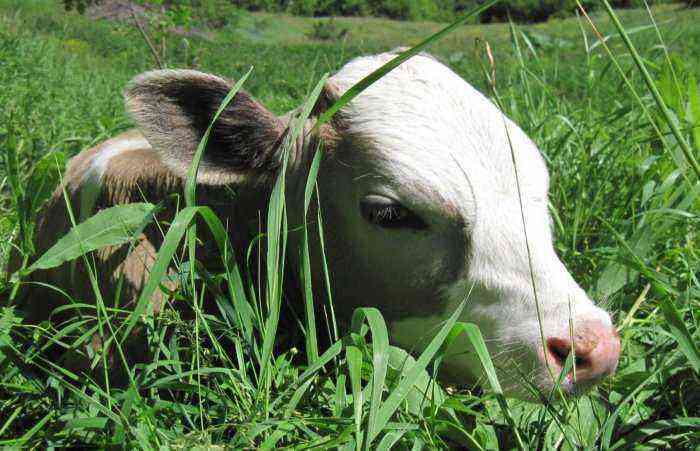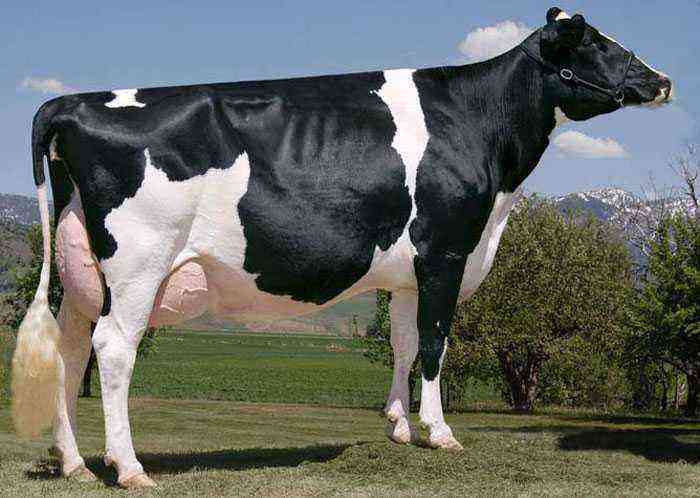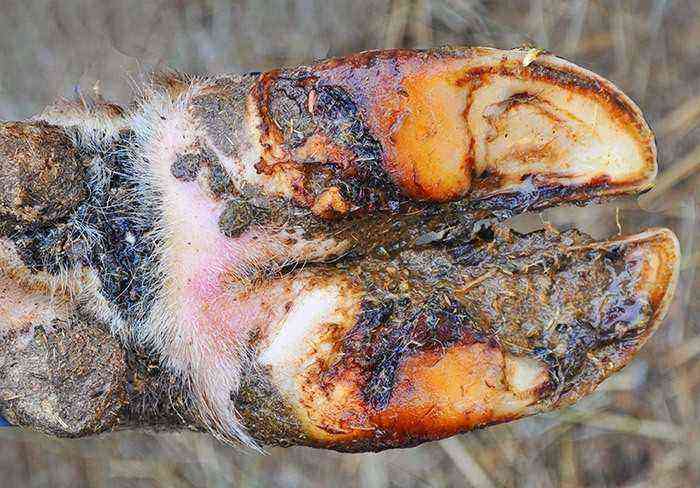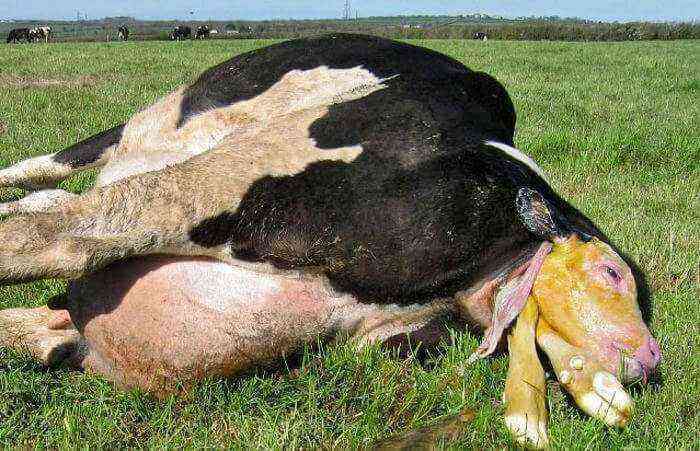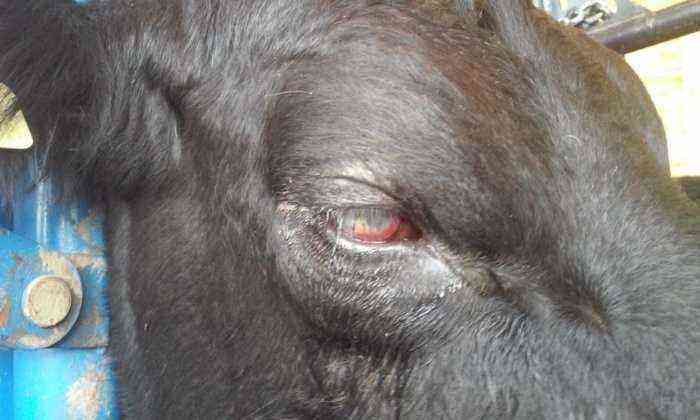Among the variety of diseases that cattle are susceptible to, there are a number of infections that are of particular danger to newborn calves. They cause serious disturbances in the work of the respiratory or digestive tract, which young animals cannot cope with. These diseases include rotavirus, coronavirus, diplococcal infection of calves and some other varieties.
sick calves
Types of infections in newborn calves
There are a lot of various diseases of an infectious nature in calves. And most of them, in the absence of operational measures, lead to the death of the animal. Therefore, it is extremely important to distinguish between such diseases and know how to deal with them.
Rotavirus
Rotavirus infection in calves – This is one of the most dangerous diseases of newborn young animals. This disease develops when a virus from the Reoviridae family enters the body. The consequences of its development are damage to the digestive tract and severe diarrhea, which, in turn, lead to dehydration of the body of the calf and his death.
The animal becomes infected mainly through the alimentary route. The virus enters the body through:
- feeder or drinker;
- hands of farm workers who are engaged in livestock maintenance;
- animal care items;
- stalls in which there was a cow carrying the virus before.
Most often, individuals aged 2-6 days are susceptible to infection. Adult cows are asymptomatic, but can become a source of infection. The pathogen is also transmitted through cats and dogs, which can spread the virus throughout the household.
Symptoms
Rotavirus infection, when it enters the body, has an incubation period of 12-48 hours. After that, the main signs of its presence appear. The main symptoms of the disease include:
Rotavirus infection in calves
- an increase in body temperature of the baby, which quickly passes;
- loss of appetite, up to a complete refusal of food;
- diarrhea;
- the general state of apathy in the animal;
- weight loss and developing weakness;
- body dehydration.
This disease is also dangerous because, against the background of the general weakening that it causes, secondary diseases can develop. Most often, in this regard, escherichiosis and calf coronavirus infection.
In general, such a disorder of the gastrointestinal tract can last for 5 days, after which death occurs from dehydration.
Treatment
Treatment in this case is carried out in several directions at once:
- To combat the main virus, special vaccines are used.
- Various antibiotics are used to eliminate secondary microflora.
- In order to strengthen the immunity of the calf, immunostimulants are used.
- The normal function of the gastrointestinal tract is restored with the help of probiotics.
adenovirus
Beyond the gastrointestinal tract adenoviral infection of cattle also affects the conjunctiva of the eye, respiratory organs, spleen and lymph nodes. As in the case of the first disease, the most susceptible category of animals is young animals. As a rule, these are individuals aged 2-4 months.
The disease develops when one of the 25 varieties of the virus from the Adenoviridae family enters the body.
Adenoviridae
The main source of the virus in the economy are sick animals. The infection can be transmitted to healthy individuals in several ways at once:
- through feed or water contaminated with mucous secretions from the nose, conjunctiva or faecal particles of infected livestock;
- through common drinkers and feeders;
- with direct contact;
- the virus can be carried on clothing or equipment of workers;
- aerogenic route.
In adults, the disease is hidden. But at the same time, they release the pathogen into the environment. In young animals, adenovirus infection can act as a primary disease, against which a number of others develop.
Symptoms
On average, the incubation period for this type of virus lasts at least 3 days. At its end, the disease is accompanied by the following clinical signs:
- a sharp rise in temperature to 41,5 degrees;
- refusal of food;
- serous discharge from the nasal cavity, which eventually turns into purulent;
- diarrhea;
- coughing;
- labored breathing;
- rapid weight loss and developmental delay;
- body dehydration.
Reference. The lethality of this disease averages 60%, with most deaths occurring in the first 3 days of infection.
Treatment
The basis of the treatment process are special serums containing active antibodies that suppress the virus in the body. Antibiotics enhance the effect of the vaccine and prevent the development of secondary microflora. Symptomatic treatment contributes to faster recovery and reduction of the consequences of the disease.
Respiratory syncytial
Respiratory syncytail infection affects the respiratory tract of cattle. The causative agent is a virus from the Paramyxoviridae family.
Respiratory syncytial infection
As a rule, calves at the age of 1-3 months are susceptible to infection. The disease is often complicated by secondary diseases, among which pasteurellosis in cattle is the most common. Cases of the disease are reported on all continents.
It should be noted that the virus is quite unstable in the environment. It dies on contact with most disinfectants.
As for the methods of transmission of infection, they have not been studied enough yet. It has been proven that the pathogen is released into the external environment from the body of a sick animal along with mucus from the nasal cavity and in discharge from the eyes. It can also be carried with air masses from the respiratory tract of an infected individual.
It is assumed that the transmission of infection is carried out by airborne droplets and by direct contact of animals. Intrauterine infection of a calf is also possible when a pregnant cow is infected.
Extensive epidemics can be traced, as a rule, in the autumn and spring.
Symptoms
Respiratory syncytail infectious disease is accompanied by such manifestations:
- coughing;
- labored breathing;
- profuse salivation;
- an increase in the body temperature of the animal to the level of 41 degrees or more;
- serous discharge constantly flows from the nose of the calf;
- bronchopneumonia often develops as a symptom.
It should be remembered that the severity of RSI symptoms largely depends on the quality of feeding, the state of the animal’s immunity, and the conditions of detention. On average, the disease in calves lasts up to 5 days. In this case, a lethal outcome is possible only in case of infection with a secondary microflora.
Treatment
There are currently no effective means of struggle in our country. But it is worth noting that in some foreign countries, scientists have managed to develop a vaccine based on an inactivated culture of the virus.
Scientists succeeded in developing a vaccine based on an inactivated culture of the virus
Diplococcal
Diplococcal septicemia is an acute inflammatory process that develops in the joints of an infected animal. In the chronic form, inflammation can also be localized in the intestines or lungs of the cow. Most often, calves aged from 15 days to 2,5 months are exposed to the disease. There are cases of the disease in six-month-old individuals.
The causative agent of this disease is a special type of diplococcus – Diplococcus septicus. It enters the body of the animal through the respiratory tract or the digestive tract. At the same time, in the case of alimentary infection, the disease rarely has a serious scale. With aerogenic infection, in almost all cases, an acute course of the disease is traced.
Symptoms
In the body of calves, diplococcal septicemia can manifest itself in the pulmonary and intestinal form. For the pulmonary, the following clinical signs are characteristic:
- temperature rise to 41 degrees;
- decreased appetite;
- weak cough that gets worse every day;
- serous, and after purulent discharge from the nasal cavity;
- signs of pneumonia develop and the joints become inflamed.
In the case of the intestinal form, the symptoms are as follows:
- a sharp increase in temperature;
- diarrhea with blood impurities;
- joint swelling.
Intestinal infection, as a rule, after 2 days leads to death.
Treatment
The basis of an effective treatment process is a special hyperimmune serum based on an inactivated culture of the pathogen. In addition to it, they appoint:
Rivanol
- novarsenol – 0,5 ml per 1 kg of animal weight intravenously;
- rivanol in distilled water (60 ml), 0,2 ml per 1 kg of weight;
- glucose solution (20%) in an amount of at least 50 ml;
- astringents for the intestines.
Experimental
Experimental bovine infection is a biological method for studying various pathogens that cause disease in cows. Intentionally infecting an animal in the laboratory can serve various purposes:
- Isolation of a pure culture of the pathogen. Such an event is not always possible to conduct in an artificial nutrient medium.
- The study of the effectiveness of developed vaccines and other drugs in the fight against a particular disease.
- Determination of the main symptoms, manifestations, forms and duration of infection in the body of living organisms.
As for the methods of infection, most often the infection is introduced into the body:
- by alimentary route through the mouth of the experimental animal;
- aerogenic method when spraying a pathogen;
- by direct contact with the source of the disease;
- by separate intramuscular or intravenous injection.
Reference. Research animals, including cattle, may be bred in laboratories, but are often imported from other places to obtain more accurate results.
Coronavirus
Coronavirus infection most often affects calves under the age of 18 days. The consequence of such an infection is severe diarrhea, which gradually leads to exhaustion of the baby’s body and severe dehydration. The death of the animal can be traced by the end of the first week from the moment of infection.
Сoronaviridae
The causative agent of this disease is a virus from the Coronaviridae family. It was first identified by American scientists back in 1972. The causative agent, when infected, enters the intestines, and is also localized in the lungs, throat and nasal cavity of the calf. But, it is worth noting that the virion does not cause any special changes in the work of the respiratory tract. In this case, the general depletion of the body often leads to the development of secondary pathogenic microflora.
It should be noted that the virus in the environment is quite stable. Among the disinfectants, chloroform, trypsin and ether are the most effective in combating the pathogen.
The main source of infection is sick or recovered individuals. Often the disease manifests itself latently. In this case, there are practically no symptoms, but infected cattle release the pathogen into the environment within 3 months.
Infection of healthy individuals occurs in several ways:
- aerogenic with crowded content or general walking of animals;
- along with food and water, into which the virions got with the particles of the carrier’s feces;
- through the walls, feeders and barn elements;
- through care equipment and clothing for attendants;
- from sheep in the joint maintenance of different types of livestock.
Attention! With the development of coronavirus infection in the body of a calf, the disease is fatal in 20% of cases.
Symptoms
After entering the body of livestock, the pathogen goes through the stage of incubation. For calves up to a month, it lasts for a day, for older individuals, the incubation period, as a rule, takes 48 hours.
At the end of this period, the main symptoms of the disease begin to appear, which include:
- general depression of the animal;
- body temperature may be normal or slightly below normal;
- diarrhea, in which liquid feces become yellowish and may contain blood particles;
- the appearance of pinpoint ulcers on the oral mucosa;
- foamy discharge in the mouth;
- bloating;
- rapid weight loss despite a good appetite.
Bloating and rapid weight loss in calves
The disease can be acute or subacute. On average, its duration is 1-2 weeks. Without complications of secondary infection, the disease often ends favorably.
Treatment
The main way to combat coronavirus infection is the timely vaccination of livestock. To this end, several variants of such a vaccine have been developed in various countries. In Russia, the live vaccine “Biovac” and a number of more specific drugs are most often used.
The drug is administered orally into the body of a newborn calf. Pregnant cows are also vaccinated to produce antibodies in their colostrum. The procedure is carried out in the form of subcutaneous and intravenous injections.
Conclusion
As you can see, there are a lot of infections that young cattle are susceptible to. And many of them involve a fatal outcome for the animal. Therefore, in order to provide the farm with a healthy offspring, it is necessary to strictly observe the basic sanitary and veterinary standards for keeping animals and eliminate the identified cases of the disease in a timely manner.


